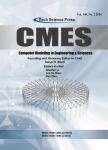A Two-Stage Scenario-Based Robust Optimization Model and a Column-Row Generation Method for Integrated Aircraft Maintenance-Routing and Crew Rostering
作者机构:Islamic Azad Univ Dept Ind Engn Cent Tehran Branch Tehran *** Iran Inst Management & Planning Studies Tehran *** Iran
出 版 物:《CMES-COMPUTER MODELING IN ENGINEERING & SCIENCES》 (工程与科学中的计算机建模(英文))
年 卷 期:2024年第141卷第2期
页 面:1275-1304页
核心收录:
学科分类:12[管理学] 1201[管理学-管理科学与工程(可授管理学、工学学位)] 08[工学] 0701[理学-数学]
主 题:Aircraft maintenance routing crew scheduling rostering uncertainty, scenario-based robust optimization column and row generation AIRLINE ASSIGNMENT
摘 要:Motivated by a critical issue of airline planning process, this paper addresses a new two-stage scenario-based robust optimization in operational airline planning to cope with uncertainty and possible flight disruptions. Following the route network scheme and generated flight timetables, aircraft maintenance routing and crew scheduling are critical factors in airline planning and operations cost management. This study considers the simultaneous assignment of aircraft fleet and crew to the scheduled flight while satisfying a set of operational constraints, rules, and regulations. Considering multiple locations for airline maintenance and crew bases, we solve the problem of integrated Aircraft Maintenance Routing and Crew Rostering (AMRCR) to achieve the minimum airline cost. One real challenge to the efficiency of the planning results is the possible disruptions in the initial scheduled flights. Due to the fact that disruption scenarios are expressed discretely with a specified probability, and we provide adjustable decisions under disruption to deal with this disruption risk, we provide a Two-Stage Scenario-Based Robust Optimization (TSRO) model. In this model, here-and-now or first-stage variables are the initial resource assignment. Furthermore, to adapt itself to different disruption scenarios, the model considers some adjustable variables, such as the decision to cancel the flight in case of disruption, as wait-and-see or second-stage variables. Considering the complexity of integrated models, and the scenario-based decomposable structure of the TRSO model to solve it with better computational performance, we apply the column and row generation (CRG) method that iteratively considers the disruption scenarios. The numerical results confirm the applicability of the proposed TSRO model in providing the AMRCR problem with an integrated and robust solution with an acceptable level of computational tractability. To evaluate the proposed TSRO model, which solves the AM



